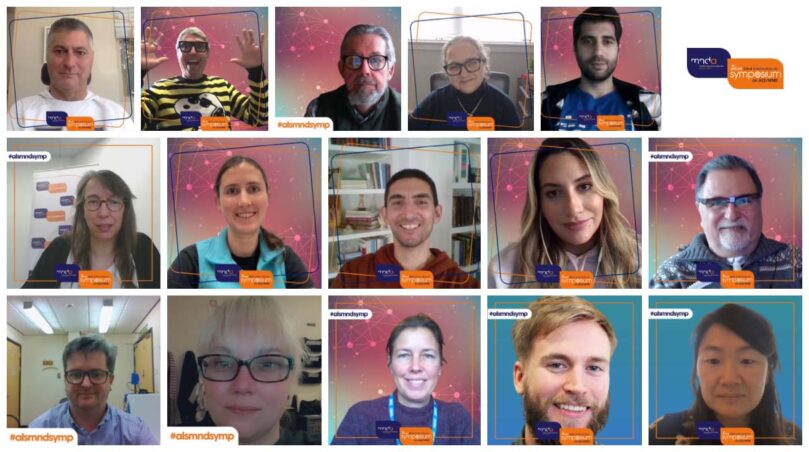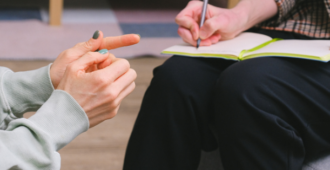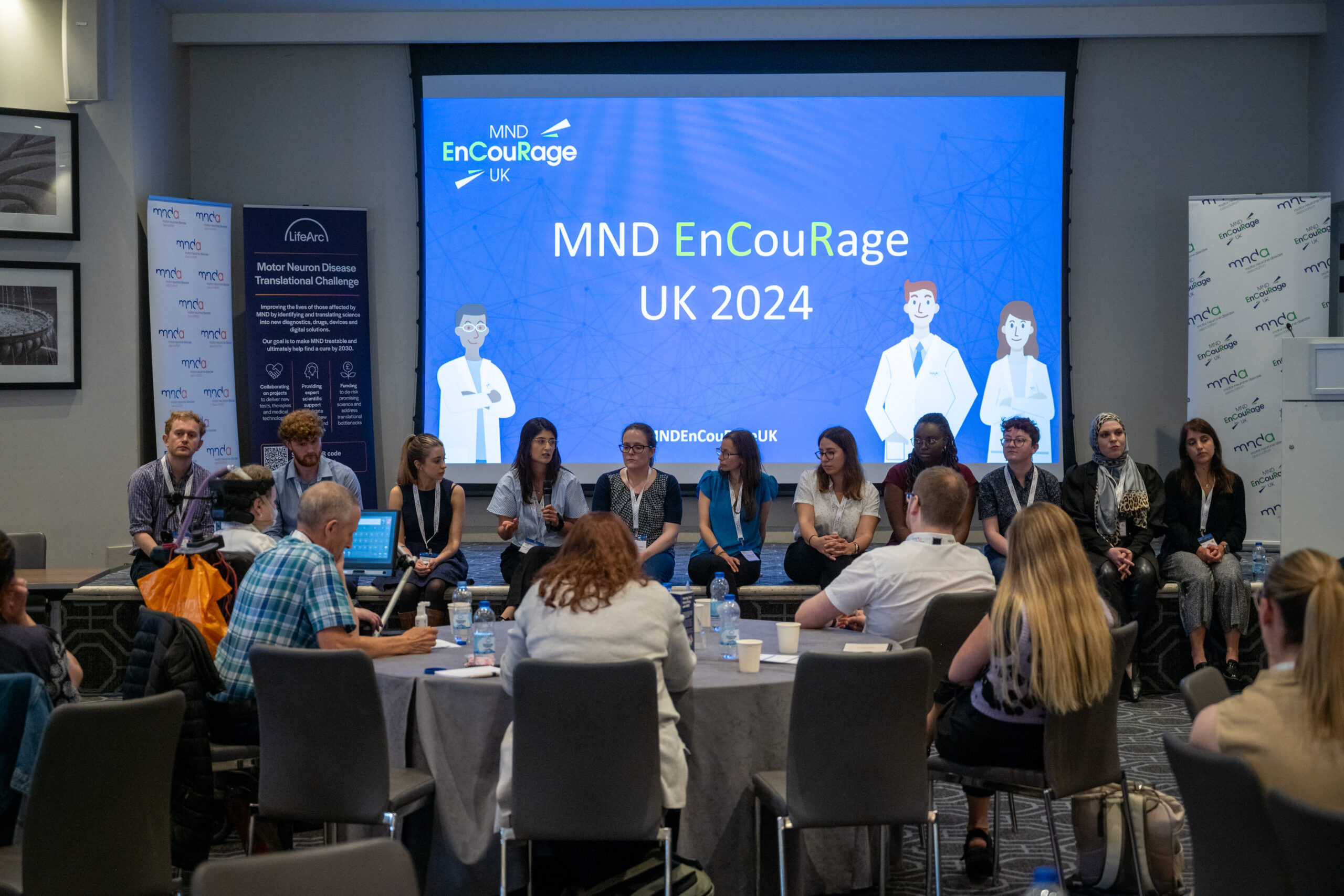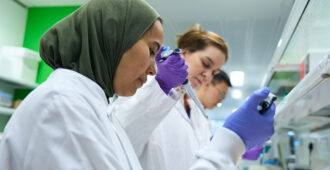This is a guest blog written by Danielle Boyce, DPA, MPH, Executive Director, the Robert Packard Center for ALS Research and Answer ALS Research Program; Assistant Professor, Johns Hopkins School of Medicine, Division of Neurology
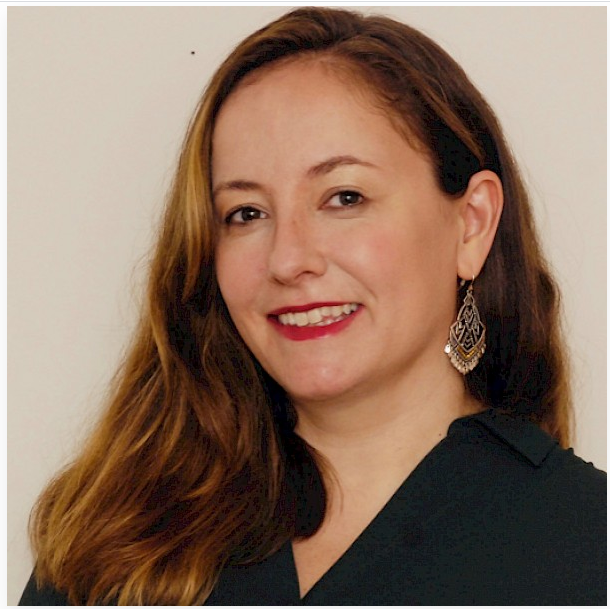
If 2021 taught me anything, it is the difference that one year can make in the fight against motor neuron disease. Just a little over one year ago, before coming to the Packard Center, I started volunteering for the clinical trials team of the US-based patient advocacy organization, I AM ALS. I was prompted to action because of my own journey as an epilepsy advocate for my son, Charlie, who has a rare and very severe form of epilepsy. At this time last year, I was working as a biostatistician and writing my dissertation. After more than a decade as a patient advocate with research training, I knew that I wanted to make a difference more broadly in the neurology advocacy world, but I didn’t know how. Then, one day, as I was preparing for a talk about the history of patient advocacy in the United States, I came across some social media posts from ALS advocates mentioning flaws in the ALSFRS-R. At the time, I worked on a project at the Johns Hopkins University School of Nursing involving instrument validation. I was very well acquainted with instrument development and the use of questionnaires as clinical trial outcome measures. The advocates’ complaints were alarming: could there really be a problem with the most commonly used outcome measure for ALS clinical trials, especially when there has been so little movement in the number of approved therapies for ALS since Lou Gehrig was diagnosed? I am ashamed to say that my first reaction was to be dismissive. It just didn’t seem possible.
I decided to engage the I AM ALS clinical trials team, including Dr. Michael Robinson, a person living with ALS, physician, and former pharmaceutical executive who also felt passionately that we must engage with all stakeholders around this topic. Michael and I worked together in the evenings via text, email, and Zoom, identifying and discussing the literature and interacting with experts. The more we read, the more we realized that the patient advocacy community was not wrong and were echoing the concerns of many neurologists: there is definitely a problem with this measure. But what could we do?
In my rare epilepsy work, my specialty is documenting our community’s anecdotes, putting a structure around social media discussions, and presenting our concerns in such a way that decision makers take note. We decided to do the same with the ALSFRS-R. Looking through the published literature, there were publications where neurologists have critiqued the scale, and developed a new self-reported ALS disability scale to help improve on its reliability. However, it was striking to us that there were no studies that asked people with ALS to review the ALSFRS-R in their own words. It was clear that the most powerful contribution that we could make was to simply ask people with ALS to share their thoughts and then share what we learn with experts who are interested in improving the scale. While we were working on the survey questions, I came across an article where Dr. Jesse Cedarbaum, who developed the original ALSFRS-R, acknowledged problems with the instrument and recommended a patient-centered approach. We knew that we were on the right track.
As we drafted the survey, the first thing that struck us was the absence of a standardized manual used by all studies worldwide. A manual is important for making sure that we ask the questions the same way to every patient in every study. We learned that there are manuals and trainings available for clinical trial researchers, but there is no universally agreed-upon manual to use in every situation. We also noticed that there were slightly different versions of the instrument online with different prompts and guidance. It was difficult to determine which one we should use. We know that people living with ALS are asked to respond to the scale in self-reported formats (such as online studies) without a clinical research coordinator present. We wondered how this variability impacted our ability to compare data sets in this age of open science and data sharing. Even before the survey was launched, our project made this important finding.
Including the ALS patient and caregiver community early in a study design ALWAYS improves the project. If you spend any length of time talking to people with ALS about the challenges associated with ALS research, they will tell you exactly what they think is wrong with the ALSFRS-R, because they are frequently presented with the instrument, and regularly stumble over the same questions. The ALSFRS-R is assessed at most clinic and study visits. People living with ALS discuss their number in support groups and social media communities. People with ALS are clearly experts on the ALSFRS-R and are the perfect collaborators to help fix it.
With the wisdom and support of co-authors Cathy Collet and Phil Green, veteran ALS advocates, we modified our recruiting and questionnaire language to be more patient centered. We launched the survey and relied on the kindness of patient advocates to share the link. The ALS community did not disappoint. In total, 127 people living with ALS or their caregivers provided detailed feedback about the instrument.
During the time of data collection, I reached out to Dr. Jesse Cedarbaum to share what we were doing, and to my delight, he very generously offered his support, even though I was still in graduate school and not on faculty at my academic institution. We also reached out to Dr. Ruben van Eijk who has written extensively on problems with the ALSFRS-R. He enthusiastically joined the team. This was the second important finding of our study experience: the ALS community is full of selfless, collaborative scientists who share the same goal: to cure ALS.
Our working group has expanded to include more people with ALS, a friend of someone who passed away from ALS, and several brilliant scientific colleagues. We plan to publish the data from our study as a supplement in the publication for anyone to use. Our ALSFRS-R project team has exciting plans for including more voices.
In December, I presented our work, as a poster and a 3-minute lightning explainer video, at the virtual 32nd International Symposium on ALS/MND. This was my first time at the Symposium, and it was an exciting virtual experience unlike any other conference I have attended. The best part of the conference was how collaborative and inclusive attendees were. When the poster presentation began, my virtual room was full of visitors, including old friends from the advocacy community and new colleagues from all over the world. Several people with ALS and caregivers visited my poster and cheered me on. A few people asked me to contact them to discuss future collaboration. One of the most amazing experiences was the visit from Dr. Christopher McDermott of the University of Sheffield, who selected my poster at random. He happens to work on the ALSFRS-R and we are now collaborating on a paper! When our poster was awarded the “People’s Choice” poster prize, I was overwhelmed by the well wishes texted to me through the chat feature on the platform as texts sent to me from friends and colleagues around the world. It meant a lot to the people with ALS and caregivers who worked on this project with me to receive the recognition that they deserve. You can view our 3-minute lightning explainer video in full below.
As I think back on my first year in ALS, I am astounded by how much a small group of dedicated volunteer patient advocates can learn and accomplish when the scientific community embraces their ideas. I will continue to encourage the scientific community to view people living with ALS and their caregivers as knowledgeable colleagues. What a difference one year can make. What will you do to help to end motor neuron disease this year?
We would like to thank Danielle for writing this blog.

